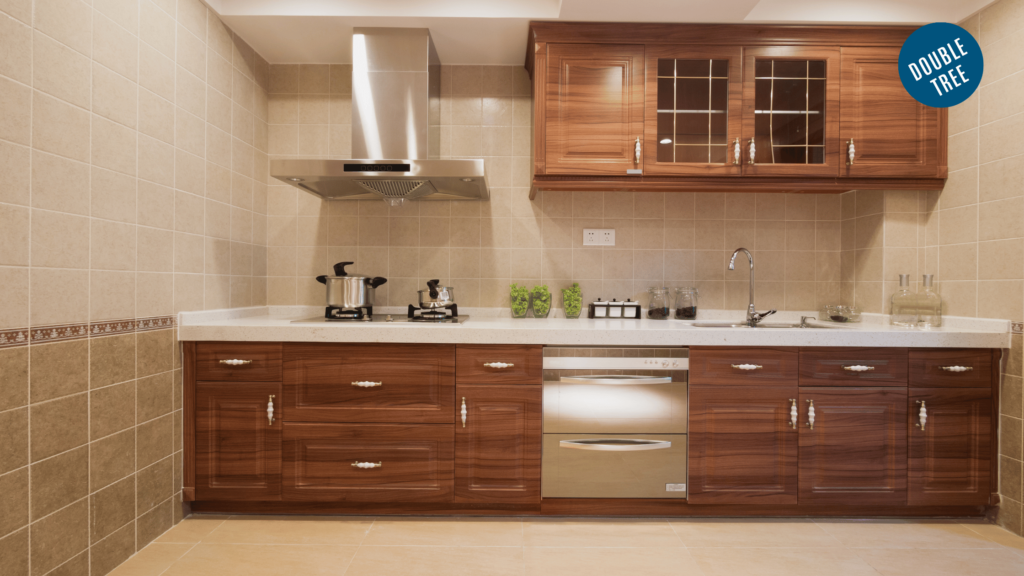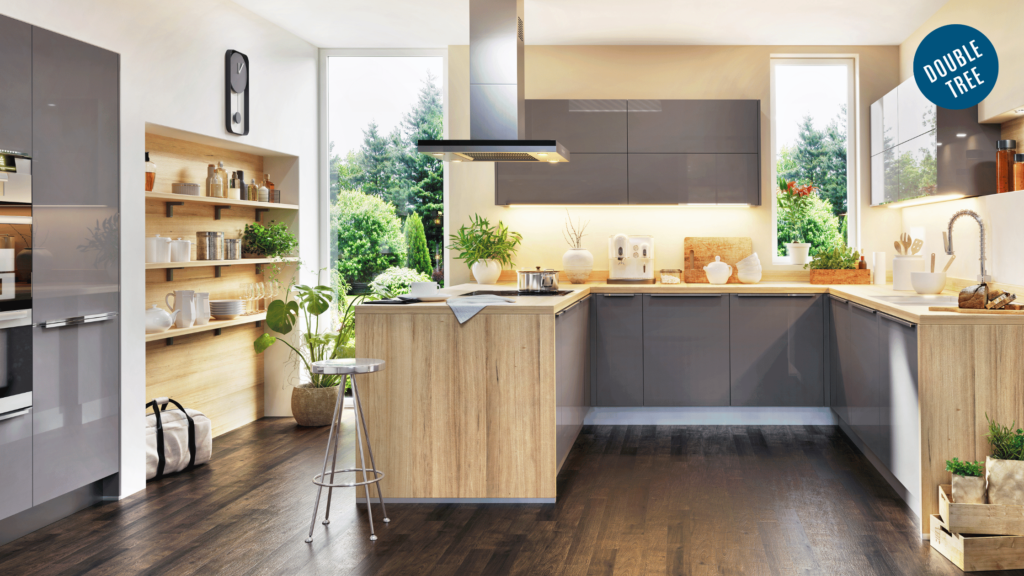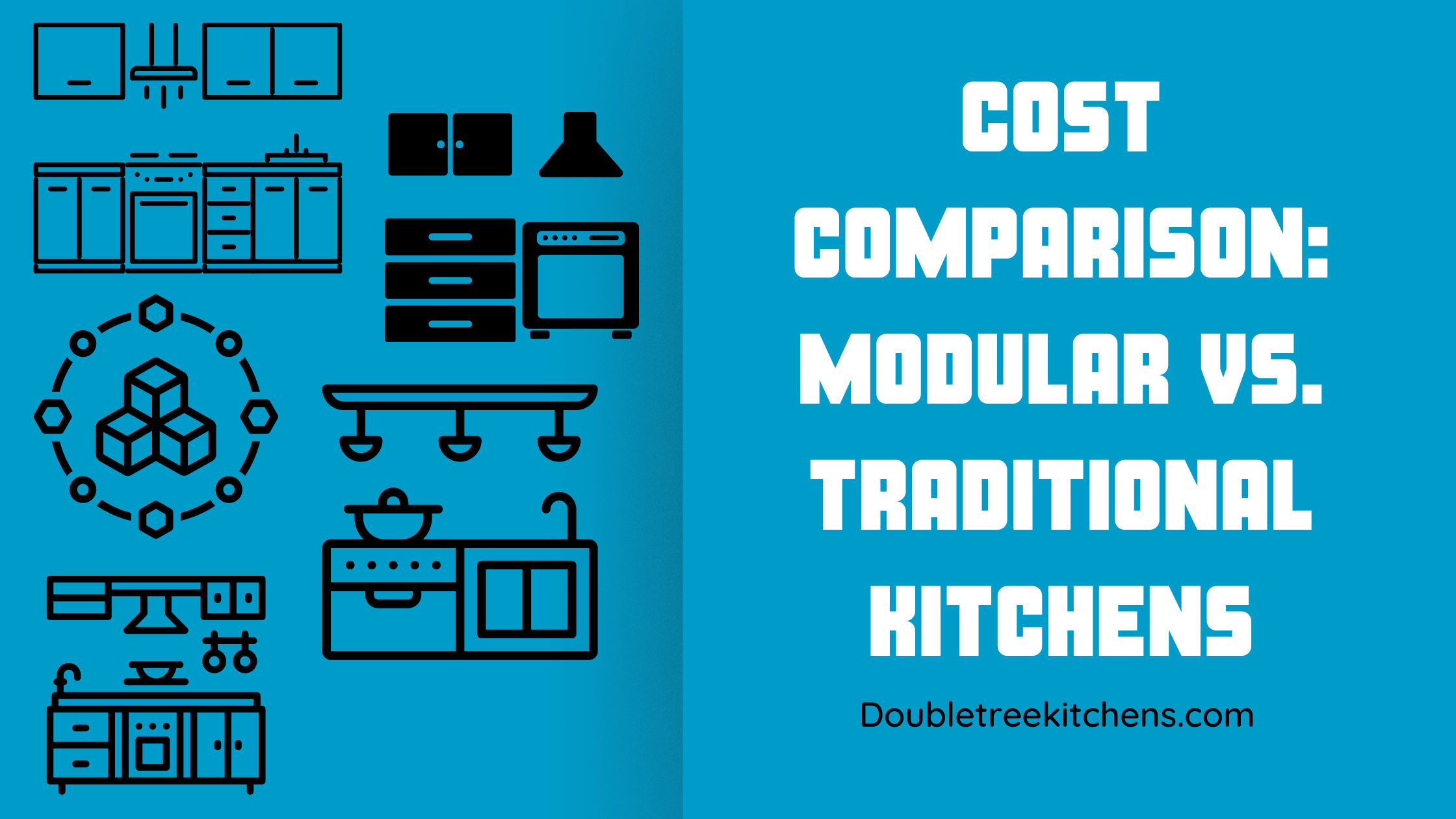Modular kitchens have become increasingly popular in recent years, offering homeowners a flexible and efficient approach to kitchen design. These customizable, pre-fabricated units provide a level of adaptability that traditional kitchens often lack.
But what happens when you need to move? Can a modular kitchen be shifted to a new location? The short answer is yes, but there are several factors to consider.
In this comprehensive guide, we’ll explore the details of relocating a modular kitchen, providing you with all the information you need to make an informed decision.
Modular Kitchens
Before shifting to a modular kitchen, it’s essential to understand what makes these kitchens unique. A modular kitchen is a modern layout with pre-manufactured cabinet modules, countertops, and accessories. These components are designed to fit together seamlessly, creating a cohesive and functional kitchen space.
Key components of a modular kitchen include:
- Base cabinets
- Wall cabinets
- Tall units (for appliances or pantry storage)
- Countertops
- Drawers and pull-out systems
- Hardware (handles, hinges, etc.)
Modular kitchens offer several advantages over traditional kitchen designs. They’re highly customizable, allowing homeowners to tailor the layout to their needs and space requirements.
The efficient use of space maximizes storage and functionality, while the pre-fabricated nature of the units ensures quick installation.
Additionally, modular kitchens are easy to maintain, as individual units can be replaced or repaired as needed.

Possibility of Shifting a Modular Kitchen
The good news for homeowners considering a move is that modular kitchens are designed with flexibility in mind. This inherent adaptability makes them more conducive to relocation than traditional built-in kitchens.
With its separate units, the modular design facilitates easier disassembly and reassembly. Most modular kitchen components adhere to standard dimensions, increasing the likelihood of fitting into a new space.
Furthermore, the units are typically connected using screws and brackets rather than permanent fixtures, which simplifies the dismantling process.
When compared to traditional kitchens, modular kitchens offer several advantages when it comes to relocation:
- Easier disassembly
- Less damage to the existing structure during removal
- Greater potential for reconfiguration in a new space
Considerations Before Shifting a Modular Kitchen
While it is possible to shift a modular kitchen, several important factors must be considered before making the decision. First and foremost, you’ll need to assess the new space carefully.
This involves measuring the new kitchen area to ensure your existing modules will fit, considering how the current kitchen layout will translate to the new space, and checking the positioning of electrical outlets, plumbing, and gas lines in the new location.
You’ll also need to evaluate the compatibility of your existing modules. This includes assessing the wear and tear on your current units and determining if they can be reconfigured to suit the new space.
It’s important to be realistic about the condition of your kitchen components and whether they’re worth moving.
Cost is another crucial consideration. Shifting a modular kitchen isn’t free, and you’ll need to factor in expenses such as:
- Labor costs for disassembly and reassembly
- Transportation fees
- Potential repairs or replacements for damaged units
- New components to fit the new space (if needed)
Finally, consider the time and effort required for the move. Adequate planning time is needed for measuring, designing, and logistics while moving and reinstalling, which can take several days.

Steps to Shift a Modular Kitchen
If you decide to shift your modular kitchen, it’s important to follow a systematic approach. Begin with thorough planning and measurement. Create a detailed plan of your current kitchen layout, measure and document the dimensions of all units, and take photographs for reference.
Then, measure the new space and create a proposed layout. The disassembly process should be approached methodically. Remove all items from cabinets and drawers, then disconnect and remove appliances.
Begin disassembly with the upper cabinets before moving to the base units. Label all components and hardware for easy reassembly later. Regarding transportation, use appropriate packing materials to protect cabinet surfaces and secure doors and drawers to prevent movement during transit.
Consider hiring professional movers experienced in transporting kitchen components to ensure the safety of your valuable kitchen units. The reassembly process in the new location should begin with the base units, ensuring they’re level. Then, install upper cabinets, making sure they’re securely anchored.
Reattach countertops, reinstall appliances, and connect utilities. Be prepared to adjust to fit the new space, and consider updating hardware or finishes for a fresh look if desired.
Challenges and Solutions
While modular kitchens are designed for flexibility, there are still challenges to overcome when shifting them. Potential damage during the move is a primary concern. To mitigate this risk:
- Use proper packing materials and techniques
- Hire experienced movers
- Consider insurance coverage for valuable components
Adapting to a different layout can also be challenging. You may need to reconfigure units, add or remove modules, and adjust your workflow. Working with a kitchen designer can help you optimize the new layout.
Dealing with wear and tear is another consideration. Older units may not withstand the stress of moving, and worn components might need replacement.
Use this opportunity to assess each component critically and consider upgrades where necessary.

Professional Help vs. DIY Approach
Deciding whether to hire professionals or tackle the move yourself is crucial. Professional movers offer expertise in handling and transporting kitchen components, have proper tools and equipment, and often provide insurance coverage for potential damages.
While it may seem more expensive upfront, professional help can save time and potentially reduce stress.
A DIY approach, while potentially more cost-effective initially, comes with risks. These include:
- Potential for personal injury
- Risk of damaging expensive kitchen components
- Longer completion time and more disruption to daily life
- Lack of specialized tools and knowledge
When comparing costs, consider the immediate expenses and the value of your time and effort, the potential costs of repairing self-inflicted damage, and the long-term benefits of a professionally executed move.
Tips for a Successful Modular Kitchen Shift
To ensure a smooth transition of your modular kitchen to its new home, keep these tips in mind:
- Create a detailed inventory of all components
- Label each unit, drawer, and shelf
- Take photos of connections and layouts for reference
- Use bubble wrap or moving blankets for cabinet surfaces
- Secure drawer contents and removable shelves
- Transport countertops vertically to reduce stress
- Evaluate the condition of each component before reinstalling
- Consider replacing outdated or worn elements
- Use this opportunity to upgrade appliances if desired

Conclusion
Shifting a modular kitchen can be a practical solution when moving to a new home or renovating your current space. Modular kitchens’ inherent flexibility and design make them more amenable to relocation than traditional built-in kitchens.
However, it’s crucial to approach the process with careful planning, consideration of costs, and awareness of potential challenges.





